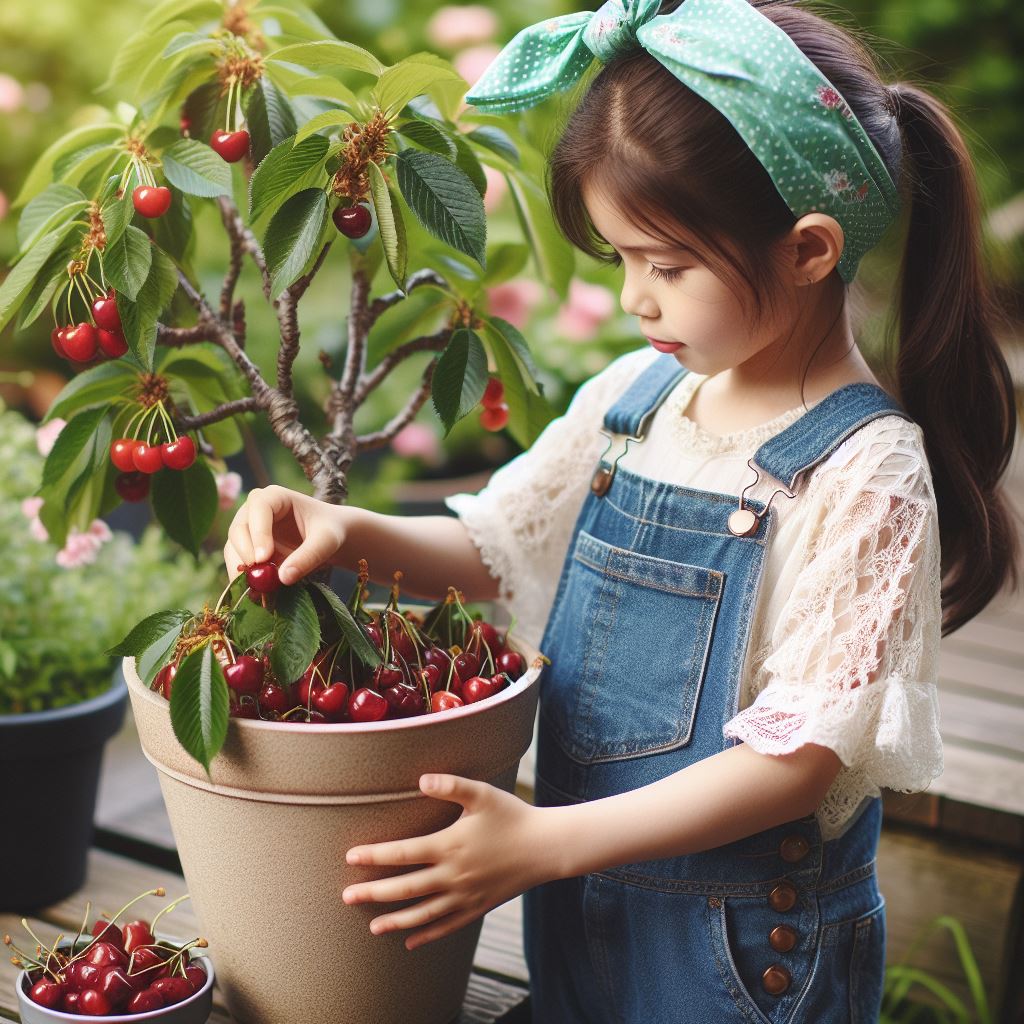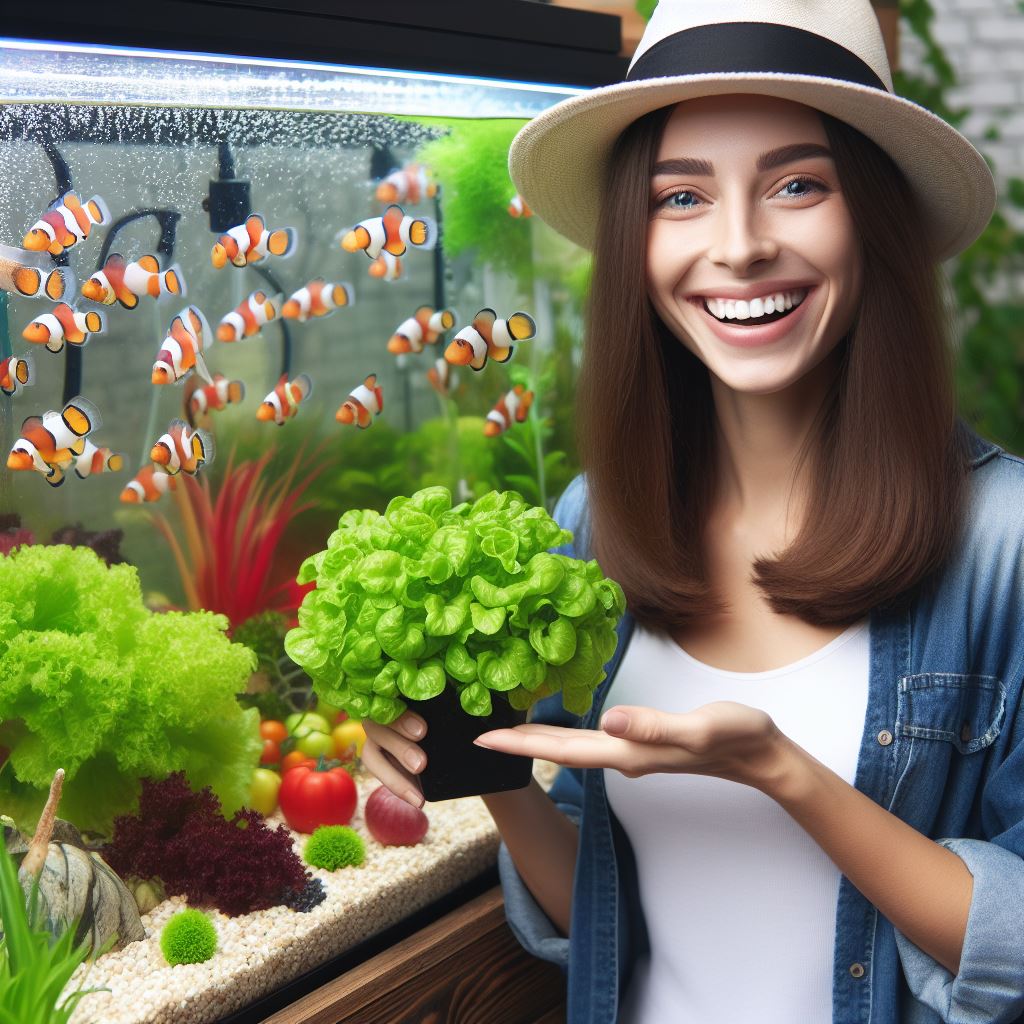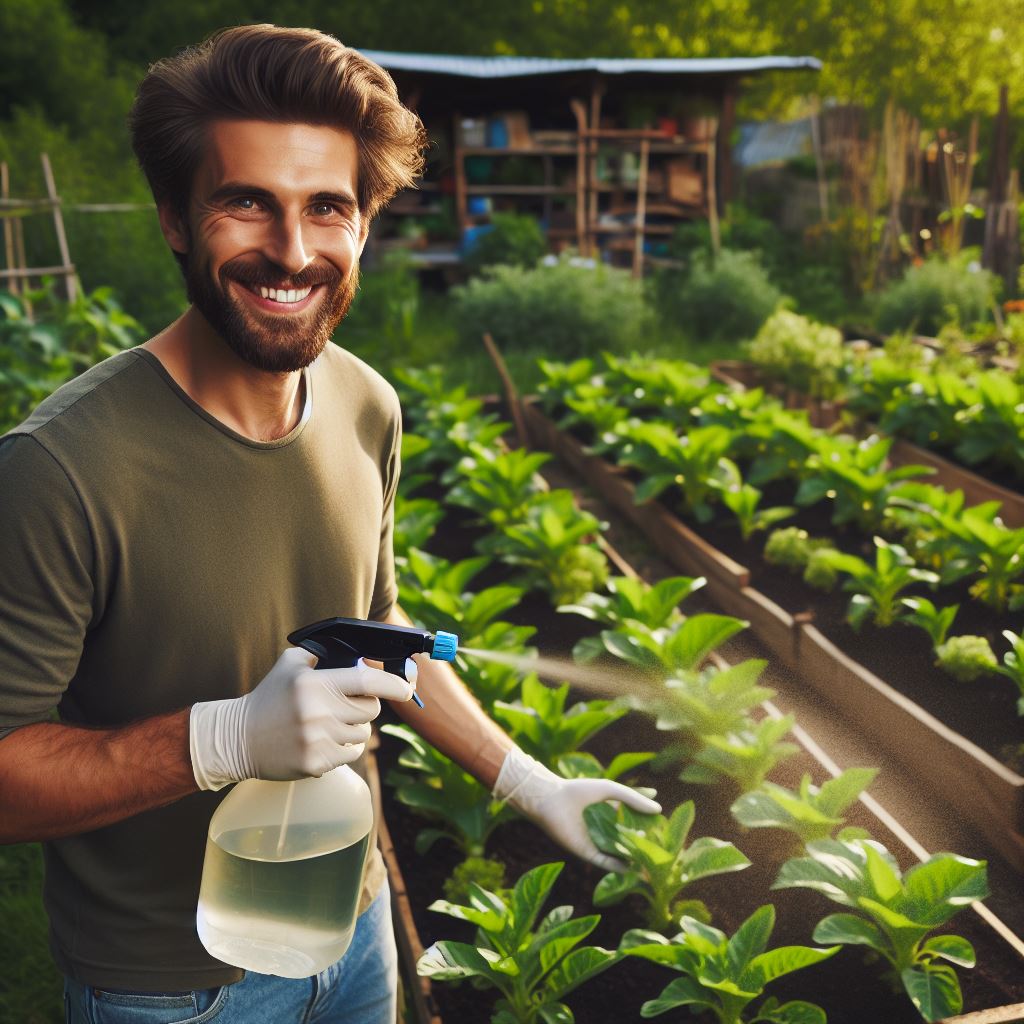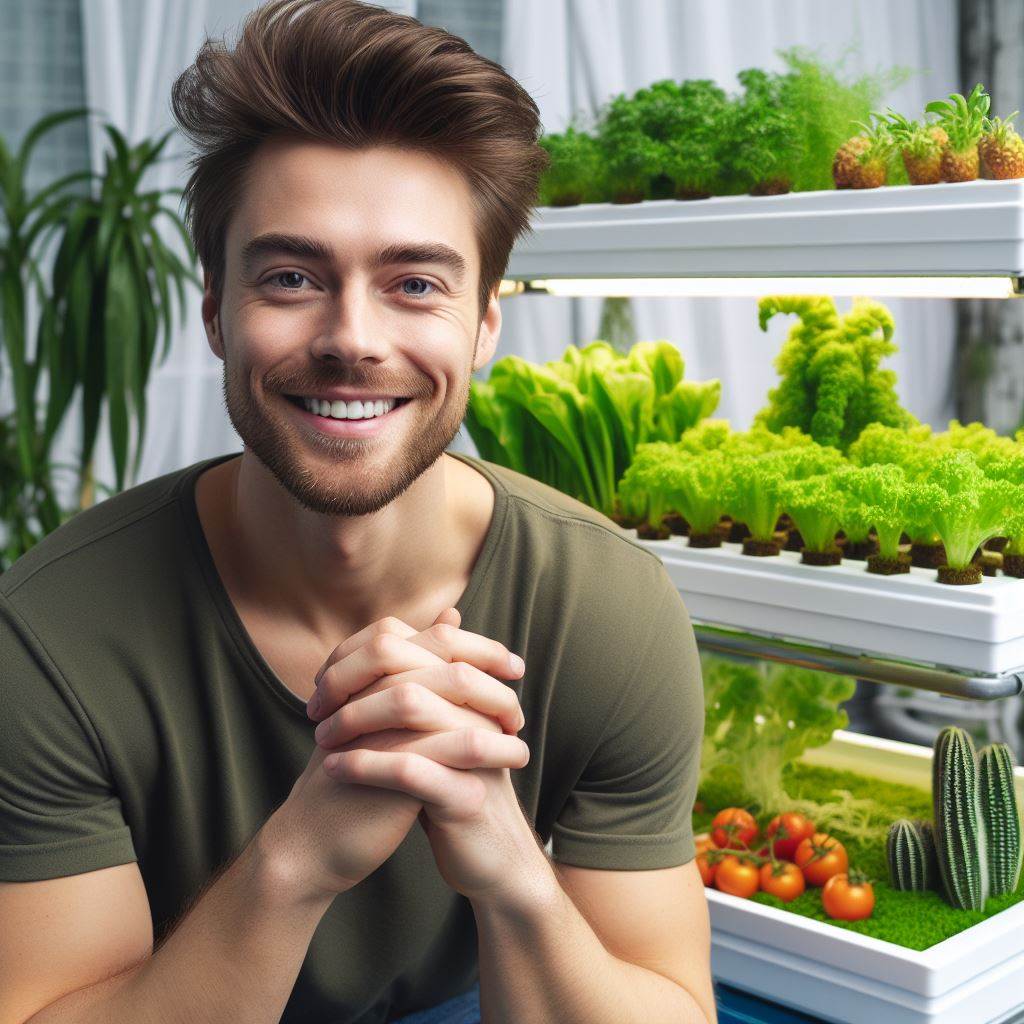Introduction
Mini orchard fruit trees in containers, catering to urban gardeners and those with restricted landscapes.
A. Brief overview of mini orchards and their benefits
- Mini orchards redefine home gardening, offering a bounty of fresh fruits within limited space.
- These compact marvels bring nature closer, enriching your surroundings with vibrant colors and fragrances.
- The convenience of having fresh produce at your fingertips enhances culinary experiences and promotes a healthier lifestyle.
- Mini orchards foster a deep connection with nature, providing a therapeutic escape in the comfort of your own home.
- The joy of nurturing and harvesting your fruits fosters a sense of accomplishment, making gardening a fulfilling endeavor.
B. Introduce the concept of growing fruit trees in containers
- Container gardening revolutionizes traditional orchards, making it accessible to urban dwellers and those with limited space.
- Versatility is the key – containers allow you to customize your orchard’s layout, moving it to sunnier spots or shelter during extreme weather.
- A boon for renters, container orchards offer mobility, allowing you to take your mini garden wherever life leads.
- Growing fruit trees in containers simplifies maintenance, providing better control over soil quality, water, and nutrient levels.
- Join the mini orchard movement and unlock a world of possibilities, cultivating a fruitful oasis in the confines of your own space.
Selecting the Right Fruit Trees for Containers
A. The importance of choosing dwarf or semi-dwarf varieties
Choosing dwarf or semi-dwarf varieties is crucial when it comes to growing fruit trees in containers.
B. Specific fruit tree options suitable for container growing
Here are some specific fruit tree options that thrive in container gardening:
- Apple Trees: Look for dwarf varieties like ‘M9 Geneva’ or semi-dwarf varieties like ‘M26 Geneva’.
- Peach Trees: Opt for dwarf varieties such as ‘Bonanza’ or ‘Pix Zee’ for container growing.
- Citrus Trees: Choose small-sized citrus trees like ‘Meyer Lemon’ or ‘Calamondin’ perfect for containers.
- Fig Trees: Compact fig trees like ‘Petite Negra’ or ‘Little Miss Figgy’ are ideal for container gardening.
- Cherry Trees: Select dwarf cherry varieties like ‘Stella’ or ‘Compact Stella’ for container cultivation.
- Plum Trees: Look for dwarf plum tree options such as ‘Dwarf Santa Rosa’ or ‘Dwarf Methley’.
C. Consider the following factors when selecting fruit trees for containers
- Climate: Ensure that the fruit tree selected is suitable for the specific climatic conditions in your region.
- Space: Evaluate the available space in your garden or balcony to determine the appropriate tree size.
- Sunlight: Choose fruit tree varieties that can thrive in the amount of sunlight available in your growing area.
- Soil: Consider the type of soil required for the specific fruit tree species you plan to grow in containers.
- Pollination: Some fruit trees require cross-pollination, so make sure to have compatible varieties if needed.
- Fruit Yield: Depending on your preferences, select fruit tree varieties that offer abundant or compact yield.
- Pests and Diseases: Research common pests and diseases for the selected fruit tree and ensure proper prevention.
By carefully assessing these factors, you can find the perfect fruit trees for container cultivation.
Remember that regular maintenance and proper care are key to successful fruit production.
Stay tuned for the next section, where we’ll discuss how to prepare and plant fruit trees in containers!
Read: From Water to Table: Hydroponic Growing
Choosing the Right Containers
A. Different types of containers and their pros and cons
- Terracotta pots: Provide good drainage but can dry out quickly in hot weather.
- Plastic containers: Lightweight and retain moisture well, but may not be as aesthetically pleasing.
- Wooden containers: Natural and attractive, but they can rot over time and may require maintenance.
- Fabric pots: Allow for excellent drainage and air circulation, but they may degrade over time.
B. Consider the size and material of containers for optimal tree growth
The size of the container is crucial for the proper growth of fruit trees in containers.
Generally, choose a container that is at least 18 inches in diameter and depth to allow sufficient root development.
When it comes to material, plastic containers are popular due to their lightweight nature and ability to retain moisture.
However, ensure that the container is sturdy and can withstand the weight of the tree and its growing medium.
C. Tips on container selection for specific fruit tree varieties
- Apple trees: Choose a container that is deep enough to accommodate their long taproots and wide enough for lateral root growth.
- Citrus trees: Opt for a container that has good drainage to prevent waterlogged soil, as citrus trees are sensitive to excess moisture.
- Stone fruit trees (such as peaches, plums, and cherries): Select a container with enough space for the tree’s roots and consider using a fabric pot for improved drainage.
- Fig trees: Choose a container that is at least 12 inches in diameter and deep enough to accommodate the vigorous growth of fig trees.
- Berry bushes: Look for wide and shallow containers to accommodate the spreading root system of berry bushes.
By considering the container types, size, and material, you can ensure optimal growth and health for your fruit trees in containers.
Remember to provide proper drainage and avoid containers that are too small or unstable.
With the right container, you can enjoy a mini orchard right in your own backyard!
Soil and Fertilizer Requirements
Having proper soil and fertilization for your container-grown fruit trees is essential for their health and fruitful yields.
Transform Your Agribusiness
Unlock your farm's potential with expert advice tailored to your needs. Get actionable steps that drive real results.
Get StartedHere, we discuss the significance of well-draining soil, selecting the right potting mix, and the importance of regular fertilization with suitable fertilizers.
A. Significance of well-draining soil for container-grown fruit trees
Well-draining soil is vital for the success of your container-grown fruit trees. It ensures proper oxygen flow to the roots, preventing waterlogging.
This promotes healthy root development, reducing the risk of root rot and other diseases.
With good drainage, excess water easily escapes the container, maintaining the ideal moisture level for the tree’s roots.
Adequate moisture management provides a favorable environment for the tree, leading to optimum growth and increased fruit production.
B. Selecting the right potting mix or creating a custom blend
Choosing the appropriate potting mix is essential for your fruit trees in containers.
Opt for a high-quality potting mix specifically formulated for fruit trees or container gardening.
Look for mixes that have a good balance of organic matter, perlite, and vermiculite. These components ensure proper drainage while retaining enough moisture for the tree’s roots.
If you prefer a custom blend, you can create one by combining compost, peat moss, perlite, and sand.
This homemade mix should provide the necessary drainage and nutrients for your fruit trees.
C. The importance of regular fertilization and recommending suitable fertilizers
Regular fertilization is vital for container-grown fruit trees as they rely solely on the nutrients provided to them.
Select a balanced slow-release fertilizer with equal or slightly higher nitrogen, phosphorus, and potassium (NPK) ratios.
These nutrients are crucial for the overall growth and fruit development of your trees.
Organic options like compost, worm castings, and fish emulsion are excellent choices for fertilizing fruit trees.
They enrich the soil with essential nutrients and improve soil structure. Follow the recommended dosage and timing specified by the manufacturer for best results.
By ensuring well-draining soil, selecting the right potting mix, and providing regular fertilization, you create an optimal environment for your container-grown fruit trees.
Remember to monitor soil moisture levels and adjust watering schedules accordingly.
With the proper soil and nutrient management, your mini orchard will thrive and reward you with delicious, homegrown fruits.
Read: Aquaponic Harvest: Growing Veggies & Fish

Proper Care and Maintenance
A. Importance of Proper Watering and Irrigation Techniques
- Water is crucial for the health and growth of fruit trees, even when grown in containers.
- Ensure proper drainage by having drainage holes at the bottom of the containers.
- Water the trees thoroughly, allowing the water to penetrate the entire root ball.
- Avoid overwatering as it can lead to root rot, while under-watering can stress the trees.
- Regularly check the moisture level of the soil and adjust watering accordingly.
- Mulching the containers helps retain moisture and regulate temperature, reducing evaporation.
- Water deeply but less frequently, promoting deep root growth and preventing shallow roots.
B. Tips on Pruning and Training Container Fruit Trees for Optimal Growth
- Pruning helps maintain the size and shape of the trees, ensuring proper fruit production.
- Remove dead, damaged, or crossing branches to improve air circulation and prevent diseases.
- Prune during the dormant season, avoiding periods of active growth.
- Train the trees using stakes or trellises to support their growth and prevent breakage.
- Regularly monitor and remove any suckers or water sprouts that appear near the base.
- Use sharp and clean pruning tools to minimize damage and the spread of diseases.
- Consider the natural growth habit of the specific fruit tree and prune accordingly for optimal yield.
C. Pest and Disease Management Strategies Specifically for Container-Grown Trees
- Inspect the trees regularly for signs of pests such as aphids, mites, or scale insects.
- Use organic or chemical insecticides specifically formulated for fruit trees in containers.
- Encourage natural predators like ladybugs or lacewings to control pest populations.
- Prevent fungal diseases by ensuring good air circulation and avoiding over-watering.
- If disease occurs, remove infected plant parts and treat with appropriate fungicides.
- Regularly clean the containers and surrounding areas to prevent pests and diseases.
- Consider using natural remedies like neem oil or insecticidal soaps as preventive measures.
Proper care and maintenance are essential for the success of fruit trees grown in containers.
By understanding the importance of proper watering techniques, pruning and training methods, as well as pest and disease management strategies, you can ensure optimal growth and abundant fruit production.
Remember to regularly monitor your container fruit trees and adjust your care routine accordingly to keep them thriving.
Read: Container Gardening: Organic Options
Find Out More: Ergonomic Gardening Tools for Easier Work
Showcase Your Farming Business
Publish your professional farming services profile on our blog for a one-time fee of $200 and reach a dedicated audience of farmers and agribusiness owners.
Publish Your ProfileMaximizing Space and Yield
A. Recommendations for arranging containers in small spaces
- Utilize vertical space by placing containers on shelves or hanging them from walls or fences.
- Group containers together to create a visually appealing mini orchard and save space.
- Consider using tiered or stacking containers to maximize the number of plants in a confined area.
- Opt for dwarf or compact fruit tree varieties that are well-suited for container gardening.
- Implement a rotation system to make the most of limited space by replacing crops after harvesting.
B. Benefits of espalier techniques for container fruit trees
- Especially beneficial for small spaces, espalier techniques involve training fruit trees to grow flat against a wall or trellis.
- Creates a beautiful and decorative feature in addition to providing an abundant harvest.
- Allows for easier maintenance, pruning, and harvesting due to the compact and manageable size of the tree.
- Enables better air circulation and sunlight exposure, resulting in improved fruit quality and yield.
- Enhances pollination as the branches are more easily accessible to pollinators, leading to better fruit set.
C. Tips on pollination and improving fruit set in confined environments
- Choose self-pollinating fruit tree varieties to ensure successful fruit set even in small spaces.
- If planting non-self-pollinating varieties, make sure to have compatible pollinators nearby.
- Encourage pollinators like bees and butterflies by planting companion flowers near the fruit tree containers.
- Hand pollination can be done by transferring pollen from one flower to another using a small brush.
- Consider using hormonal sprays or organic pollination enhancers to increase fruit set in limited spaces.
By following these recommendations and utilizing effective techniques, you can transform even the tiniest space into a thriving mini orchard, enjoying the beauty and bounty of container-grown fruit trees.
Happy gardening!
Harvesting and Enjoying the Fruits of Your Labor
A. Signs of Fruit Ripeness and Proper Picking Techniques
- Observe color changes: Look for vibrant hues and the characteristic color of each fruit at its peak ripeness.
- Check firmness: Gently squeeze fruits to ensure a slight yield, indicating optimal ripeness.
- Fragrance matters: A sweet aroma is a telltale sign that your fruit is ready for harvest.
- Lift gently: Lift the fruit upward and twist slightly to detach it from the tree or branch.
B. Creative Ways to Utilize Harvested Fruits
- Fresh fruit platters: Combine various fruits for a colorful and refreshing snack.
- Homemade jams and preserves: Transform surplus fruits into delightful spreads for breakfast or snacks.
- Fruit-infused water: Enhance your hydration with water infused with slices of your favorite fruits.
- Grilled fruit skewers: Bring a unique twist to barbecues by grilling fruit skewers for a flavorful side.
- Fruit salads with a twist: Experiment with exotic combinations to create tantalizing fruit salads.
C. Encouraging Experiences and Recipes
- Share your harvest journey: Connect with fellow gardeners by exchanging stories and lessons learned.
- Swap recipes: Exchange tried-and-true recipes that showcase the versatility of container-grown fruits.
- Create a community cookbook: Compile a digital cookbook featuring community-contributed recipes for a shared resource.
- Host a fruit-themed event: Organize a gathering where participants showcase their fruit-based creations, fostering a sense of community.
- Engage on social media: Share photos, tips, and recipes with a wider audience, celebrating the joys of container orcharding.
As you revel in the bountiful fruits of your mini orchard, embrace the community spirit and let the joy of cultivating and enjoying your harvest bring people together.
Read: Organic Garden Pest Identification Guide
Conclusion
A. Recap the benefits of growing fruit trees in containers
- Elevate your gardening game with space-saving container orchards.
- Say goodbye to limited space woes as containers fit any balcony or patio.
- Control soil quality, ensuring optimal conditions for your fruit trees.
- Easily relocate containers, following the sun or sheltering during harsh weather.
- Sidestep soil-borne diseases, fostering healthier trees in a controlled environment.
B. Encouraging readers to start their own mini orchards and experiment with container gardening
- Embark on a fruitful journey—start your mini orchard in containers.
- Unleash creativity by experimenting with various fruit tree varieties.
- Relish the simplicity of container gardening; it’s accessible to beginners and seasoned enthusiasts alike.
- Experience the joy of harvesting homegrown fruit, right at your doorstep.
C. The satisfaction of enjoying homegrown fruit from a mini orchard
- Indulge in the unparalleled taste of sun-ripened, homegrown fruit.
- Revel in the satisfaction of nurturing and reaping the rewards of your mini orchard.
- Share the sweetness with loved ones, fostering a deeper connection to nature.
In the end, dive into container gardening—your pathway to a bountiful, accessible, and gratifying mini orchard experience. Happy planting!




